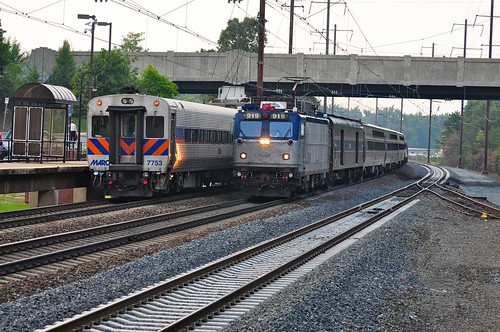DowneasterPassenger
Lead Service Attendant
Hi All, I've been away from this forum for a while busy doing other stuff. I haven't been away from riding Amtrak though. I missed the folks here, glad to be back with a question for you.
A recent trip from PHL to BOS had me on the #194 being pulled by one of the older AEM-7 type locomotives. The train had repeated electrical problems resulting in stops and starts, "recycling" the engine and numerous instances of loss of HEP power. The delays added up and we arrived in Boston about 90 minutes late.
So my question is, is there any way to tell in advance, when making a reservation, which Regional trains are using AEM-7 and which use the newer HHP-8? Like, when you book an airline ticket, you can usually find out the equipment type. Is the same possible for Amtrak? Or do they just randomly switch the locomotives around all the Regional trains?
The second part of the question is, does it even matter? My subjective impression is that the HHP-8 is more reliable than the older locomotives, and one could expect fewer delays caused by electrical problems. But is that really true or is it always just a roll of the dice as far as equipment malfunctions?
Thanks for sharing your knowledge and opinions!
A recent trip from PHL to BOS had me on the #194 being pulled by one of the older AEM-7 type locomotives. The train had repeated electrical problems resulting in stops and starts, "recycling" the engine and numerous instances of loss of HEP power. The delays added up and we arrived in Boston about 90 minutes late.
So my question is, is there any way to tell in advance, when making a reservation, which Regional trains are using AEM-7 and which use the newer HHP-8? Like, when you book an airline ticket, you can usually find out the equipment type. Is the same possible for Amtrak? Or do they just randomly switch the locomotives around all the Regional trains?
The second part of the question is, does it even matter? My subjective impression is that the HHP-8 is more reliable than the older locomotives, and one could expect fewer delays caused by electrical problems. But is that really true or is it always just a roll of the dice as far as equipment malfunctions?
Thanks for sharing your knowledge and opinions!





